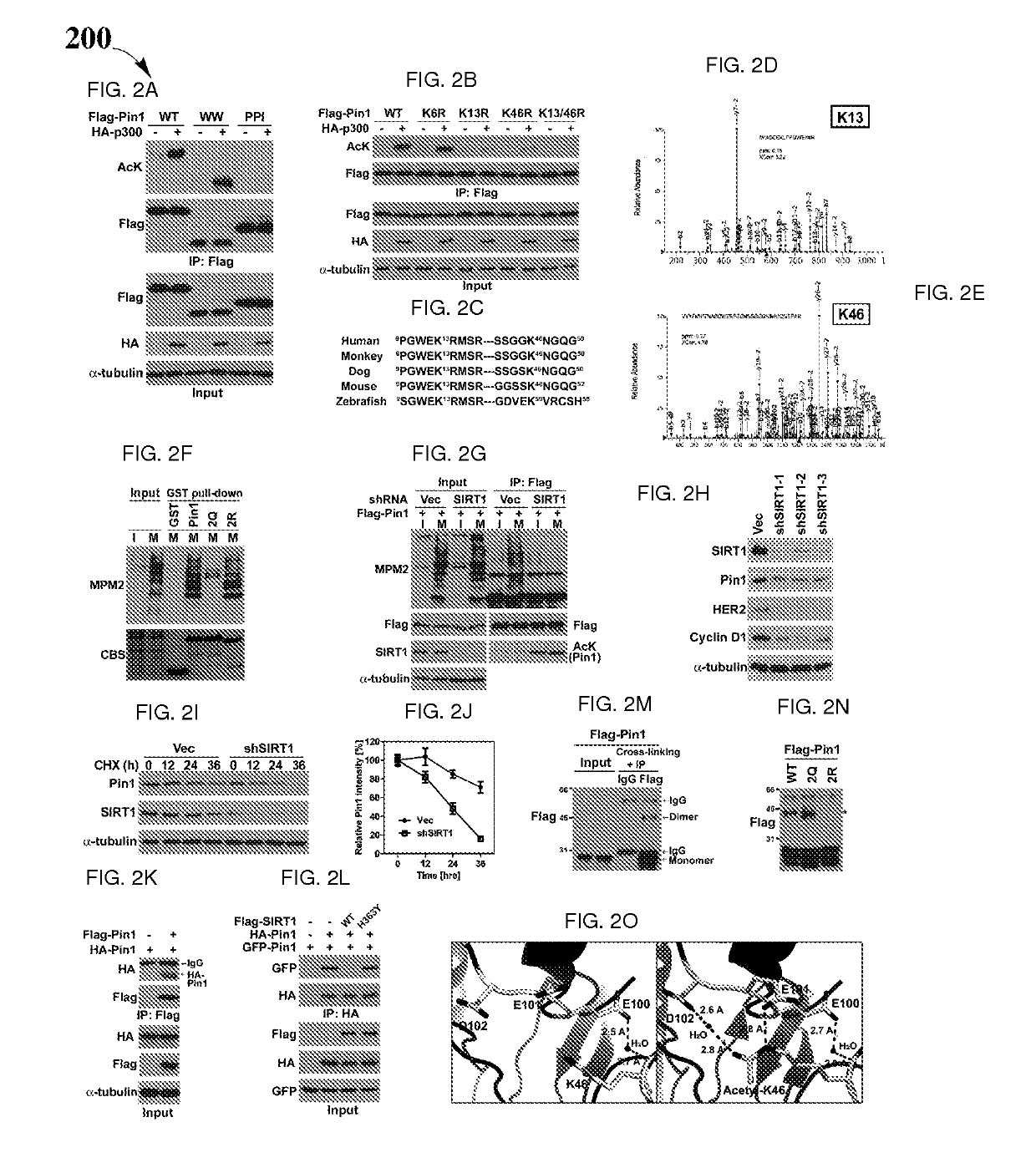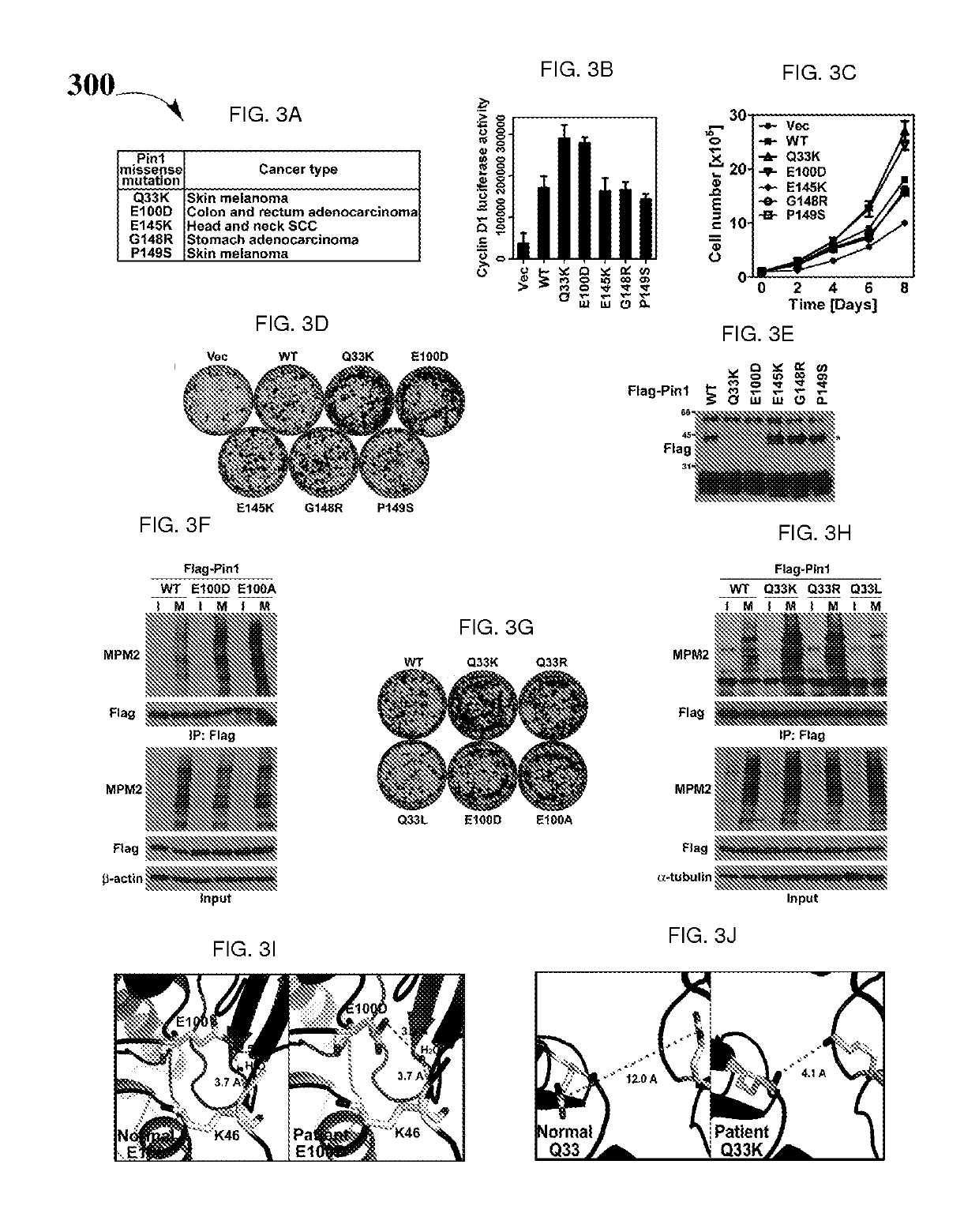Biomarkers for Pin1-associated disorders
a pin1-associated disease and biomarker technology, applied in biochemistry equipment and processes, organic active ingredients, aerosol delivery, etc., can solve the problems of poor prognosis and ineffective targeting drugs against aggressive solid tumors, and achieve the effect of enhancing pin1 tumorigenic activity
- Summary
- Abstract
- Description
- Claims
- Application Information
AI Technical Summary
Benefits of technology
Problems solved by technology
Method used
Image
Examples
example 1
Breast Tumor Biomarker
[0167]To determine whether Pin1 is overexpressed in human tumor samples, it was examined the levels of Pin1 in human breast cancer samples using immunoblotting and immunohistochemical analysis with Pin1 antibodies, as described previously by Lu et al. (1999) and Liao et al. (2009).
[0168]Immunocytochemistry of sections of human breast tumors showed that Pin1 is indeed overexpressed in human breast tumor cells. Pin1 was detected both in the cytoplasm and in the nucleus, as well as in condensed chromosomes and mitotic spindles. Infiltrating carcinoma cells were strongly positive for Pin1 staining, while surrounding normal connective tissue, blood vessels, adipose, and stromal cells were only weakly positive. To ensure that these signals represent Pin1, a control immunostaining was performed whereby the Pin1-specific antibodies were first specifically depleted by pre-incubation with glutathione beads containing GST-Pin1. This depletion resulted in no detection of s...
example 2
Colon Tumor Biomarker
[0169]To explore whether Pin1 is also overexpressed in colon tumors, it has been examined the Pin1 levels in several human colon tumor samples using immunostaining and immunoblotting analyses (using the experimental methods set forth in Example 1). Pin1 was overexpressed in most of the samples examined, as compared with normal colon samples. These results indicate that Pin1 may act as biomarker for colon cancer.
example 3
Prostate Tumor Biomarker
[0170]To explore whether Pin1 is also overexpressed in prostate tumors, the Pin1 levels in several human prostate tumor samples were tested using immunostaining and immunoblotting analyses (using the experimental methods set forth in Example 1). Pin1 was overexpressed in most of the samples examined, as compared with normal prostate samples. These results indicate that Pin1 may act as biomarker for prostate cancer.
PUM
| Property | Measurement | Unit |
|---|---|---|
| immune disorder | aaaaa | aaaaa |
| conformational specificity | aaaaa | aaaaa |
| crystal structure | aaaaa | aaaaa |
Abstract
Description
Claims
Application Information
 Login to View More
Login to View More - R&D
- Intellectual Property
- Life Sciences
- Materials
- Tech Scout
- Unparalleled Data Quality
- Higher Quality Content
- 60% Fewer Hallucinations
Browse by: Latest US Patents, China's latest patents, Technical Efficacy Thesaurus, Application Domain, Technology Topic, Popular Technical Reports.
© 2025 PatSnap. All rights reserved.Legal|Privacy policy|Modern Slavery Act Transparency Statement|Sitemap|About US| Contact US: help@patsnap.com



